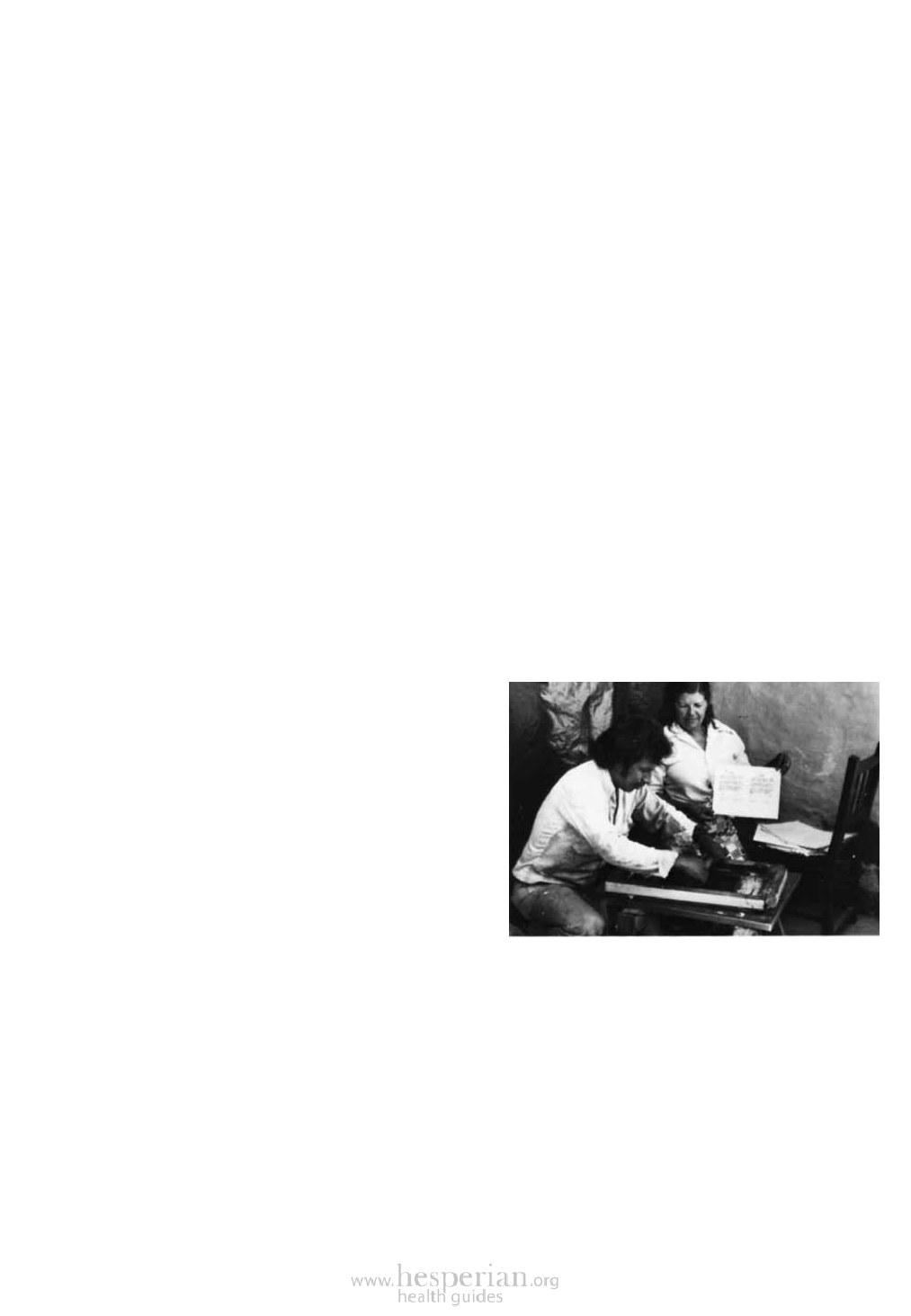
16-14
CLOTH FOR THE SILKSCREEN
When finding cloth to use for making the screen, look for silk or nylon cloth with
very fine threads. Cloth with finer threads is easier to use and makes clearer prints.
Some stores sell special cloth for silkscreens, called screen fabric or screen mesh.
MAKING STENCILS
It usually helps to first draw the images and words you want on the poster onto
your stencil. Use a piece of thin plastic or stiff paper, such as a manila folder. With
scissors or an exacto knife, cut out the drawing (the holes in the paper or plastic are
what will later appear on the poster). This takes practice! It is easiest to use simple
images and large letters.
A different method called photo emulsion makes it possible to print more detailed
images and smaller letters by drawing or typing them onto clear thin plastic.
However, to use photo emulsion, you need to buy and use light sensitive chemicals
that harden on the screen. For more information on photo emulsion, talk to
someone who knows how, or see this helpful website: http://en.wikibooks.org/wiki/
Screen_Printing/Making_the_Stencil/Photo_Emulsion
POSSIBLE USES FOR SILKSCREEN
PRINTING
You can make silkscreen copies of:
• notices with health information for the public
• health education posters drawn by school
children
• posters with useful information for school
children, mothers, midwives, or other groups
• notices for upcoming events or meetings
• t-shirts
Have students help with copying posters so they
will know how to do this when they return to
their villages.
Here Pablo Chavez (a village health worker who
drew some of the pictures for this book) teaches
students how to use a silkscreen.